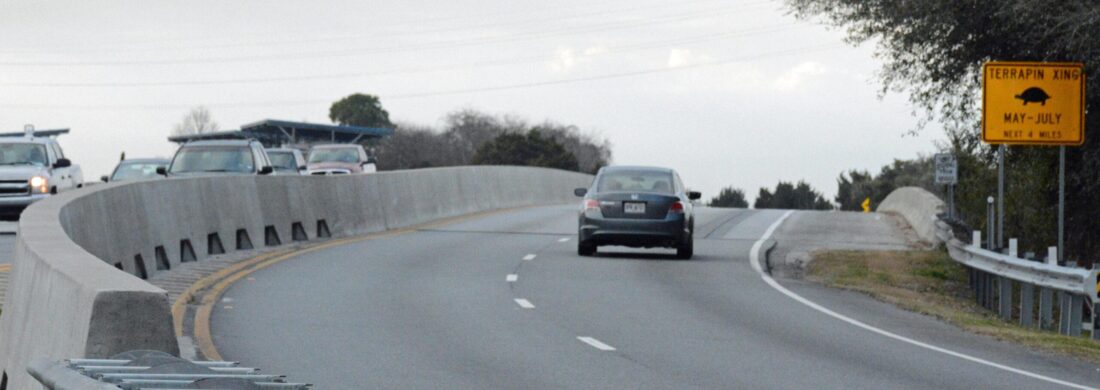Durable concrete traffic barriers are used on roads, construction sites, and public spaces to help separate vehicles, guide traffic, and protect both drivers and pedestrians. These barriers play a key role in keeping traffic organized and reducing risks in busy or dangerous areas.

By learning about the main advantages of installing durable concrete traffic barriers, people can make informed choices for safer and more controlled environments.
- High-impact collision resistance improves highway safety
Durable concrete traffic barriers are built to absorb strong impacts during vehicle collisions. Their structure helps slow down and redirect vehicles, which can lower the chance of severe accidents and help prevent cars from crossing into oncoming traffic.
The design of these barriers allows them to stay in place, even after being hit by heavy vehicles. This adds a layer of protection for both drivers and road workers.
Many modern concrete barriers use features like reinforced connections between segments to help improve their strength during a crash. This helps them manage repeated impacts and continue to provide safety after an incident.
Concrete barriers also act as a visual guide, making lane boundaries clear to drivers. This can help people stay in their lanes, adding another benefit to areas that see heavy or fast-moving traffic.
- Effective traffic flow management reduces congestion
Concrete traffic barriers guide vehicles into the correct lanes, which helps people drive in an organized way. When cars are directed clearly, there are fewer sudden lane changes and stops.
This structure is important when roads are busy or when there is construction. Smooth movement allows cars and trucks to keep driving at a steady speed. Drivers spend less time waiting and there is less chance of a traffic jam.
With barriers in place, confusion drops because everyone knows where to go. Clear pathways mean quicker commutes for workers, families, and delivery trucks. Even during busy hours, traffic tends to keep moving.
Concrete barriers also help prevent accidents that might block the road. Fewer crashes mean lanes stay open longer throughout the day. With organized lanes and safer roadways, daily rush hour becomes less stressful for everyone.
- Long-term durability minimizes maintenance costs
Concrete traffic barriers are built to last many years, even in places with heavy use. Their strong material helps them stand up to constant vehicle impact, changes in temperature, and harsh weather. Because of this strength, they do not break down quickly.
Since these barriers are less likely to crack or wear out, the need for frequent repairs is much lower. This also means that workers spend less time fixing them, which can help limit lane closures or traffic delays. Over time, this can save both money and effort.
Regular barriers made from weaker materials might need more repairs and attention. With durable concrete, the long lifespan provides steady performance with fewer problems. This allows people to focus resources on other parts of the road, instead of always repairing barriers.
Long-lasting materials help reduce waste, too, since they stay in place instead of being replaced often. This helps keep maintenance costs lower year after year.
- Clear lane separation prevents vehicle crossover accidents
Concrete traffic barriers create a strong physical divider between lanes of traffic. This helps drivers stay in their designated lanes, even in busy or high-speed areas.
By having a clear separation, the risk of cars crossing into oncoming traffic is greatly lowered. When vehicles are stopped from moving into the wrong lane, the chances of head-on collisions go down.
These barriers are especially useful on highways and in other places where there are many vehicles. Even if a driver loses control or swerves, the barrier acts as a shield to keep cars in their own lanes.
Concrete barriers also help organize traffic flow. This makes driving less confusing, especially where many lanes are close together. Drivers can see the clear boundary, so they are less likely to drift or make sudden lane changes.
Making the lanes easy to see and harder to cross can prevent serious accidents. This boosts safety not just for drivers, but also for passengers and pedestrians nearby.
- Improved pedestrian protection in urban areas
Concrete traffic barriers make city streets safer for people on foot. They act as a solid barrier between sidewalks and moving cars, helping to stop vehicles from accidentally entering walking areas.
In places with lots of foot traffic, these barriers help reduce the risk of accidents. They provide a clear border, which helps drivers recognize where pedestrians walk and keeps people from accidentally stepping into busy roads.
Their strength allows them to stand up to impacts better than many other types of barriers. This helps keep walkways secure even if a car loses control.
When cities use these barriers near crosswalks and intersections, it helps people feel safer and more comfortable. People are more likely to walk in areas where their safety is protected by a physical barrier.
Concrete barriers also work in construction zones and temporary walkways, adding security for people moving through unfamiliar or busy areas. This helps support safe movement in growing city environments.
Conclusion
Durable concrete traffic barriers offer sturdy protection for both drivers and pedestrians. Their use helps reduce accident risks, direct traffic, and support safer road systems.
Many places see lower crash rates and improved separation of different areas after adding these barriers. They also help manage water runoff and keep people and property safer.
Choosing concrete barriers can mean easier traffic flow, more organized roads, and fewer hazards. Each benefit plays a role in making roads safer and more manageable for everyone.



